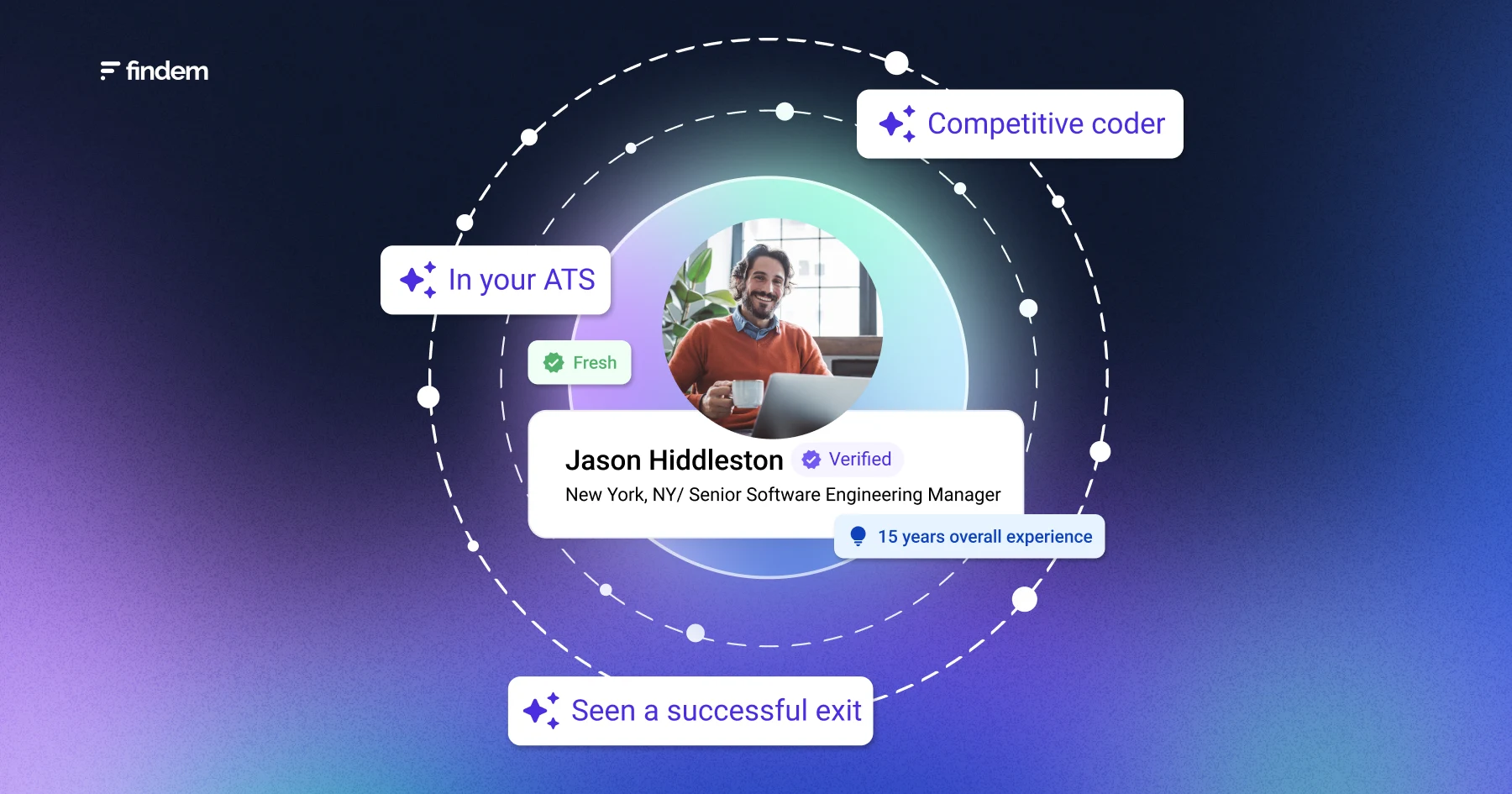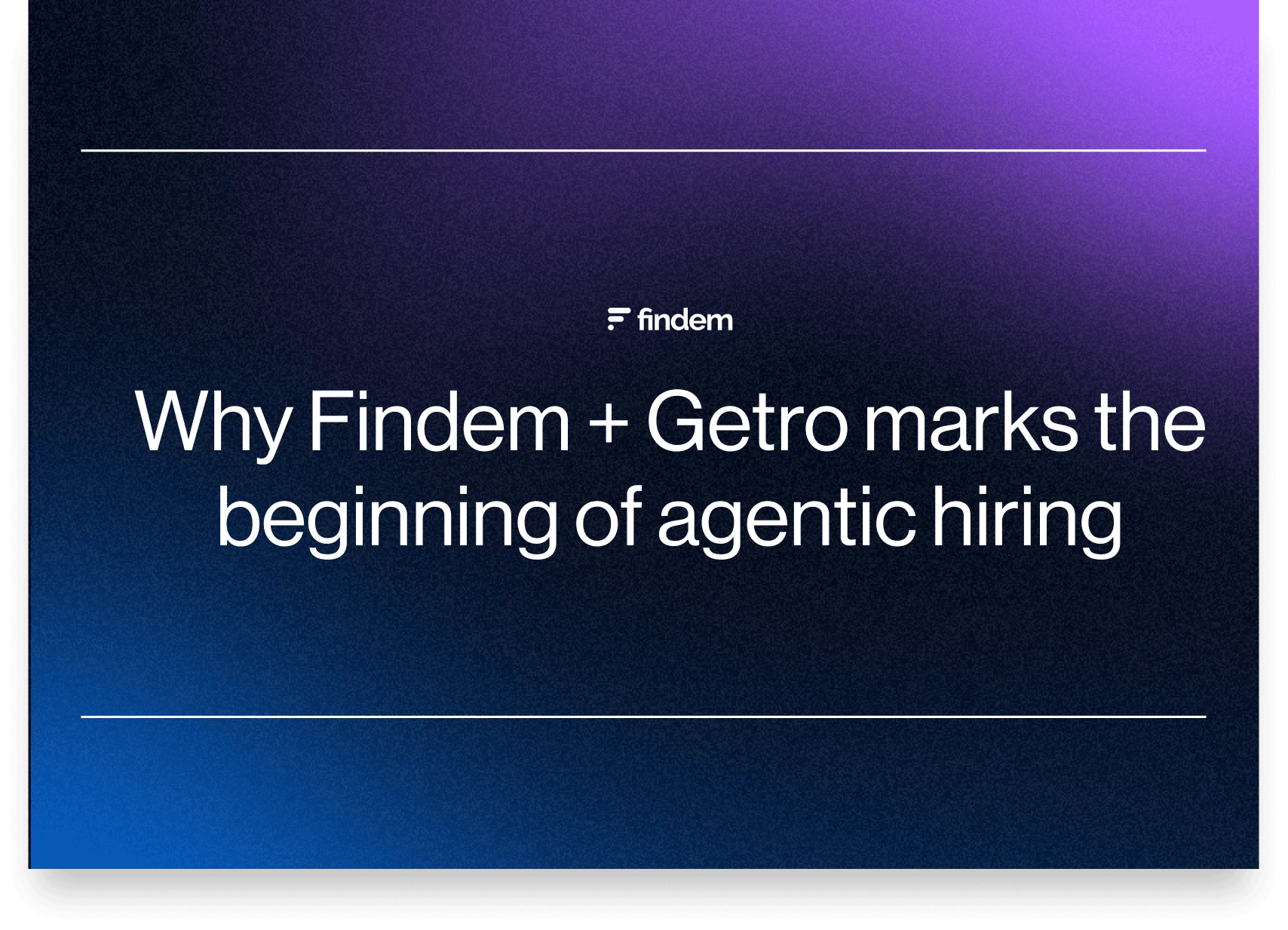.svg)
How 3D data goes beyond resumes to reveal true candidate value
.svg)

Traditional resume screening is fundamentally broken. Qualified candidates often get filtered out, while unqualified ones slip through, creating a hiring crisis that wastes time, money, and talent. But there's a better way forward, and recruiters are ready for a change.
Advanced 3D candidate assessment technology is transforming how organizations evaluate talent, moving beyond keyword matching to reveal genuine candidate potential. The results speak for themselves: organizations using this approach are seeing dramatic improvements in hire quality, diversity, and time-to-fill.
The resume screening crisis
If you're in talent acquisition, you've likely experienced one, if not all of these mounting frustrations.
Qualified candidates disappear in the initial screening
Self-reported resumes, outdated profiles, and siloed systems create an incomplete picture. Great candidates who could excel in your role never make it past the first filter. People who feel like they are a great fit for a job — and very well may be one — don't even get a first interview.
Unqualified candidates flood your pipeline
AI-optimized applications now prioritize ATS keywords over actual skills. Candidates are optimizing for the ATS, not for competencies, creating an avalanche of poor matches that drowns out real talent.
Time gets wasted on poor matches
Without deeper candidate insights, recruiters spend precious hours on candidates who aren't the right fit.
Harver research confirms what many professionals already know: "Resumes offer a limited view of future potential. They're prone to embellishments and inaccuracies. Resumes can introduce unconscious bias. They don't capture soft skills or cultural fit. And reviewing resumes is labor-intensive and inefficient."
The hidden bias problem
Resume screening introduces systematic bias that undermines diverse hiring. My Personal Recruiter research reveals that "biases related to gender and age are prevalent in resume screenings. Studies have indicated that resumes from female candidates may be judged more harshly or be less likely to be selected for interviews compared to those from male candidates with similar qualifications."
The data from the research is sobering: candidates over 50 are less likely to receive job offers compared to younger counterparts, even when they possess necessary skills and experience. These biases are deeply ingrained and significantly skew the hiring process, making it challenging for companies to build diverse and effective teams.
Additional biases compound the problem. Resume screeners may subconsciously favor the first candidates they review (primacy bias) or remember the last few better (recency bias). Without going beyond resume screening, hiring managers default to candidates from prestigious companies or universities, potentially missing exceptional talent from non-traditional backgrounds.
The best candidate might be someone who gained skills through volunteer work, online classes, military service, apprenticeships, mentorships, or smaller companies — but traditional screening methods systematically overlook these valuable experiences.
Understanding 3D talent data
Manual research into candidate impact, credentials, and relevant experience drains recruiter time and erodes trust in the sourcing process. Findem’s 3D data offers a comprehensive alternative, creating detailed candidate profiles across three critical dimensions:
- The People Dimension: A person's skills, experience, and verification of the impact they've made in previous roles.
- The Company Dimension: Context about their work environment and career trajectory analysis. Have they worked during an IPO, rapid growth, or restructuring? Have they operated in union environments or startups? How quickly did they achieve promotions or gain new responsibilities?
- The Time Dimension: When and where candidates made their impact. A submarine operator in the Navy between 1990-2000 had different experiences and used different technologies than one from 2000-2020. A product leader's resume might describe their title and duties, but 3D data reveals whether they launched successful products during their tenure or struggled with delayed completions.
Real-world success: KIPP's transformation
Let’s look at a case study of an organization going beyond resume screening, using 3D data for multidimensional candidate assessment.
KIPP Public Schools Northern California is a network of 22 free public charter schools serving more than 6,600 students across some of the state’s most diverse, populous cities. It seeks to equip students with the skills and confidence to pursue paths through college, careers, and beyond.
Searching for teachers with specific certifications, credentials, or experiences had previously taken days. But by using 3D candidate profiles, Sarah Vaccaro, Associate Director of Talent, says her team could find teachers with specific certifications with a single click.
“The search function is really great because we can be so specific, like I'm looking for someone with a California math credential,” Vaccaro said. “You can also even go down to different identity markers or years of experience so we can find really specific talent.”
Findem’s platform is built on a foundation of trusted, verified 3D data. Gaps that existed previously — up-to-date contact information being the biggest — became strengths for KIPP, who leveraged Findem’s 3D data and attributes to search for and reach out to candidates with the ideal mix of skills, experiences, and qualifications for open teaching positions.
Once the KIPP team found such candidates, it used Findem to create and customize automated, targeted outreach campaigns. Suggested email templates and AI-powered candidate insights helped the team write more creative, personalized emails to potential hires — helping establish better brand recognition and response rates.
Since implementing Findem, KIPP has not just retained teachers, but seen growth in areas it couldn’t previously measure. This includes a significant 18% increase in teachers with 2 or more years of experience, a 4% rise in teachers of color, and a 2% increase in bilingual staff, furthering its goal of representation within their schools.
For KIPP and other organizations, 3D data gets to the heart of what managers really want: an employee who will succeed in the specific environment of the organization. It’s so much more than keyword resume screening.
Implementation strategy: From keywords to insights
Moving beyond traditional screening requires a systematic approach that leverages comprehensive data sources.
Enrich your existing data
Modern platforms can verify candidate information across 100,000+ sources, including GitHub, Stack Overflow, Crunchbase, and data from your internal ATS and CRM systems.
Validate skills in seconds
Replace manual research with automated verification of candidate abilities, experiences, and career impact—with zero manual research required.
Reduce screening bias
Move beyond the problematic 74-second resume scan that Forbes research shows is typical. Instead, use comprehensive candidate evaluation that reveals true potential and reduces hiring bias.
Focus on predictive factors
Instead of just reviewing what candidates have done, understand how their experiences translate to success in your specific organizational environment.
Gain a competitive advantage with 3D data
The talent acquisition landscape is evolving rapidly. Organizations that continue relying solely on resume screening will miss top talent, while competitors using 3D data gain decisive advantages through better, faster hiring decisions.
The evidence is clear: when you can validate skills, experiences, and career impact in seconds while reducing bias and improving diversity outcomes, you're not just hiring better — you're building stronger, more representative teams that drive business success.
Ready to transform your hiring process? Contact us to talk more about how you can speed up your hiring process while producing better matches with 3D data.










